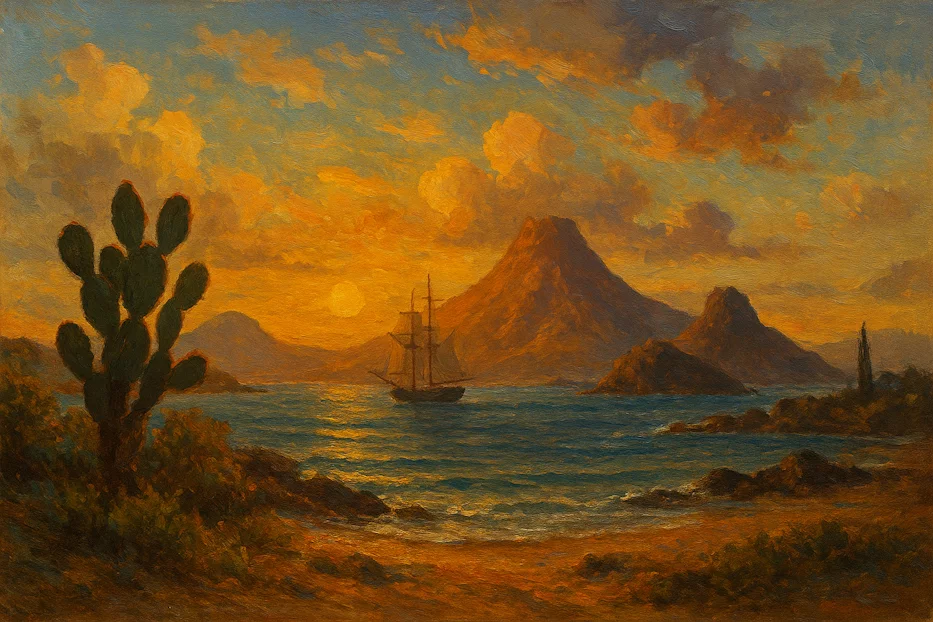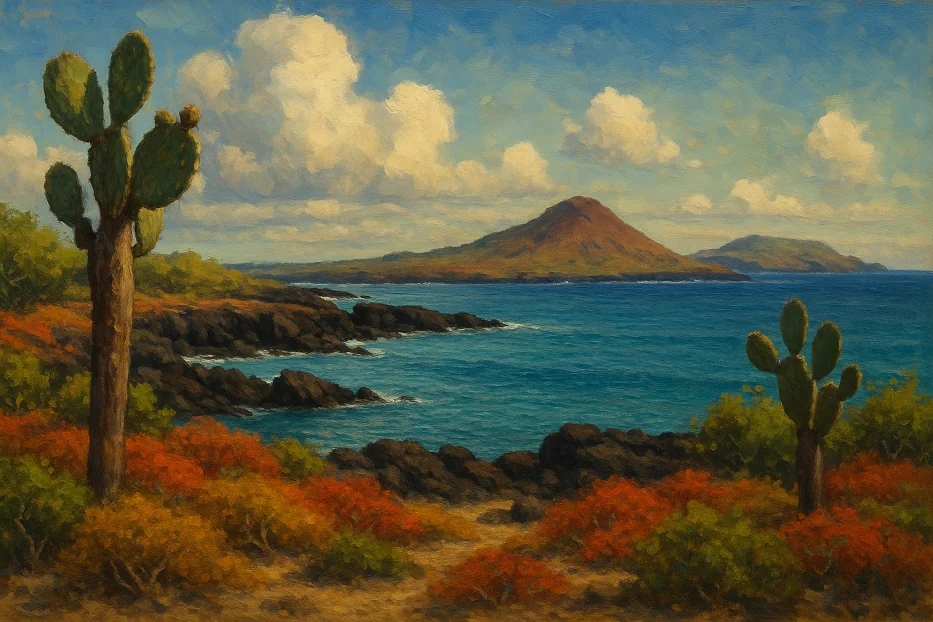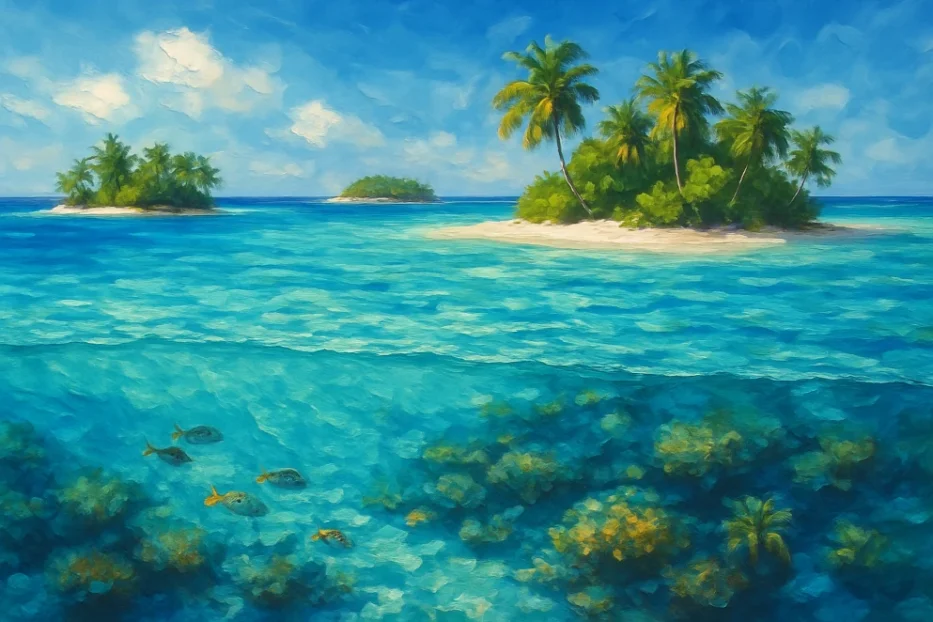Discover the timeless allure of islands—where unique cultures, rich biodiversity, and fragile ecosystems collide. From the Galápagos to the Maldives, explore their history, beauty, and future in a changing world.
When you first step onto an island, there is a subtle shift. The air feels different—saltier, heavier, charged with the sense of separation. Behind you lies the expanse of the sea, a barrier that isolates and protects. Ahead is a self-contained universe, where time often seems to flow at its own pace. Islands are not just land surrounded by water. They are worlds within worlds, each with its own stories, struggles, and symbols of survival.
For centuries, islands have drawn the human imagination. They are at once destinations of escape and crucibles of evolution, havens of culture and harbingers of climate change. To understand islands is to glimpse the paradox of human existence itself: our longing for solitude, our instinct to connect, and our fragile place in nature’s web.
Table of Contents
A Natural Laboratory of Life
Galápagos Islands Evolution and Biodiversity
Islands have long been nature’s testing grounds. Nowhere is this clearer than in the Galápagos, the Pacific archipelago that inspired Charles Darwin. When Darwin arrived in 1835, he noticed subtle differences between species on different islands—tortoises with distinctive shells, finches with varied beaks. In the constraints of isolation, nature innovates.
Why Islands Are Important to Biodiversity
This phenomenon is called island biogeography: the study of how species evolve when cut off from mainland ecosystems. Isolation breeds specialization. Birds grow flightless when predators are absent, as with New Zealand‘s kiwi. Lizards adapt to niches unoccupied elsewhere. Some creatures shrink—like the “hobbit” hominins (Homo floresiensis) discovered on Flores Island in Indonesia—while others grow to enormous proportions, like the Komodo dragon.
Islands show us the extremes of life. They are fragile but extraordinarily inventive ecosystems. Lose them, and you lose an entire library of evolution.
Yet fragility is precisely the point. Limited space and resources mean that species have less resilience to disturbance. Introduce a rat, and bird populations collapse. Cut down a forest, and entire food chains vanish. Islands illustrate both the miracle and the precarity of life.
Islands as Cultural Crossroads
If islands are natural laboratories, they are also cultural crossroads. The Pacific, for instance, is home to some of humanity’s most astonishing navigational feats. Long before GPS, Polynesian voyagers charted vast distances using only stars, swells, and the flight paths of birds. They settled islands as far apart as Hawaii, New Zealand, and Easter Island, building civilizations that thrived in isolation yet remained tied to the sea.
Elsewhere, islands became hubs of exchange. Zanzibar, lying off the coast of Tanzania, was once a bustling center of trade linking Africa, Arabia, and India. Spices, ivory, and slaves passed through its harbors, leaving behind a rich cultural tapestry still visible in its Stone Town—a UNESCO World Heritage Site where Swahili, Arab, Persian, and European influences converge.
Islands, paradoxically, embody both seclusion and connectivity. While their remoteness fosters unique traditions and languages, their position along maritime routes ensures constant flows of ideas and goods. In the Caribbean, for example, centuries of colonialism created cultural mosaics where African, European, and Indigenous legacies mix in music, cuisine, and festivals.
The Island as Escape
For many, islands symbolize escape. Writers, artists, and wanderers have long sought their solitude. Ernest Hemingway found refuge in Key West, where he wrote To Have and Have Not. Paul Gauguin left Europe to paint the dreamscapes of Tahiti. Even contemporary luxury travelers chase the idea of the “private island”—a patch of paradise free from the pressures of the modern world.
But the fantasy of island escape has deeper roots. In literature, islands often stand for isolation and discovery: from Daniel Defoe’s Robinson Crusoe to Shakespeare’s The Tempest. They are stages where humanity confronts itself stripped of distractions. Alone with the sea, the island becomes a mirror of the soul.
Travelers today still chase that timeless allure. There’s something about arriving by boat or seaplane that makes you feel you’ve truly left the world behind. Even if you’re only a few miles offshore, the island feels like another planet.
Fragility in the Face of Rising Seas
Yet the very qualities that make islands alluring also render them vulnerable. Climate change is rewriting their futures at an alarming pace. Low-lying nations like the Maldives and Kiribati face the prospect of entire communities being displaced as sea levels rise. Coral reefs, vital both as wave barriers and biodiversity hotspots, are bleaching under warming oceans.
For islanders, these are not abstract issues—they are daily realities. In Tuvalu, residents already speak of the possibility of becoming “climate refugees.” On the Solomon Islands, coastal villages have relocated inland as the sea swallows their ancestral land.
Ironically, islands that contribute least to global carbon emissions are suffering its most devastating consequences. Their plight serves as a moral compass for the world, highlighting the urgency of collective climate action.
Tourism: Blessing or Curse?
Tourism fuels many island economies, bringing jobs and infrastructure. Yet it also strains ecosystems already under pressure. Cruise ships disgorge thousands of visitors into fragile harbors. Luxury resorts demand resources—freshwater, electricity, imported goods—that islands struggle to supply.
In places like Bali, tourism has both enriched and overwhelmed. Once a quiet Hindu enclave, it now hosts millions annually, sparking debates about overdevelopment, waste management, and cultural commodification. Similarly, the Greek islands grapple with balancing heritage preservation against mass tourism, as narrow streets groan under the weight of selfie sticks and souvenir stalls.
Some islands, however, are pioneering sustainable models. Palau, in the western Pacific, requires all visitors to sign an environmental pledge upon arrival, promising to respect local culture and nature. The Seychelles has invested in marine protected areas funded by “debt-for-nature” swaps, ensuring reefs and fisheries remain intact for future generations.
Islands can’t afford to think short-term. If they destroy what makes them unique, they lose everything—their ecosystems, their tourism, their survival.
Islands as Mirrors of Humanity
Perhaps the greatest power of islands lies in their symbolism. They are microcosms of the human condition. They teach us about resilience and limitation, connection and separation, fragility and creativity. To stand on an island shore is to sense both the enormity of the sea and the intimacy of the land beneath your feet.
In literature and myth, islands often serve as stages for transformation. Odysseus wandered among them on his way home. Thomas More imagined Utopia as an island society. Even in modern psychology, the “island” is a metaphor for isolation, independence, or sanctuary.
In truth, we are all islanders—our planet itself is an island adrift in the cosmic sea. The challenges islands face—scarcity of resources, vulnerability to external forces, the need for cooperation—mirror the challenges of humanity as a whole. Protecting islands is not just about saving distant paradises; it is about learning to survive together on a fragile Earth.
The Call of the Island
As the sun sets over an island horizon, the sea turns gold, the palms sway in the breeze, and the sounds of life—waves, birds, human laughter—mingle in the air. It is easy to romanticize islands, to see them as timeless escapes. Yet their true story is more complex: a story of ingenuity, adaptation, vulnerability, and resilience.
In every island lies a lesson. The Galápagos teaches us about evolution. The Maldives warns us of climate change. Polynesia reminds us of human courage in navigating the unknown. And each tiny dot on the map, no matter how remote, reminds us of the interconnectedness of all life.
The allure of islands endures not because they are separate from the world, but because they reflect it—compressed, magnified, and distilled. They are reminders of what we cherish, what we risk, and what we must protect.
For as long as waves crash against their shores, islands will continue to inspire us, challenge us, and call us back—worlds within worlds, forever caught between sea and sky.
Direct Ferries
Routes, Schedules, Prices



